10 Iconic Furniture Pieces From Design History That Any Interiors Buff Should Know By Name
A touchstone of their time, these classic furniture designs tell a story of craftsmanship, care, and a commitment to innovation
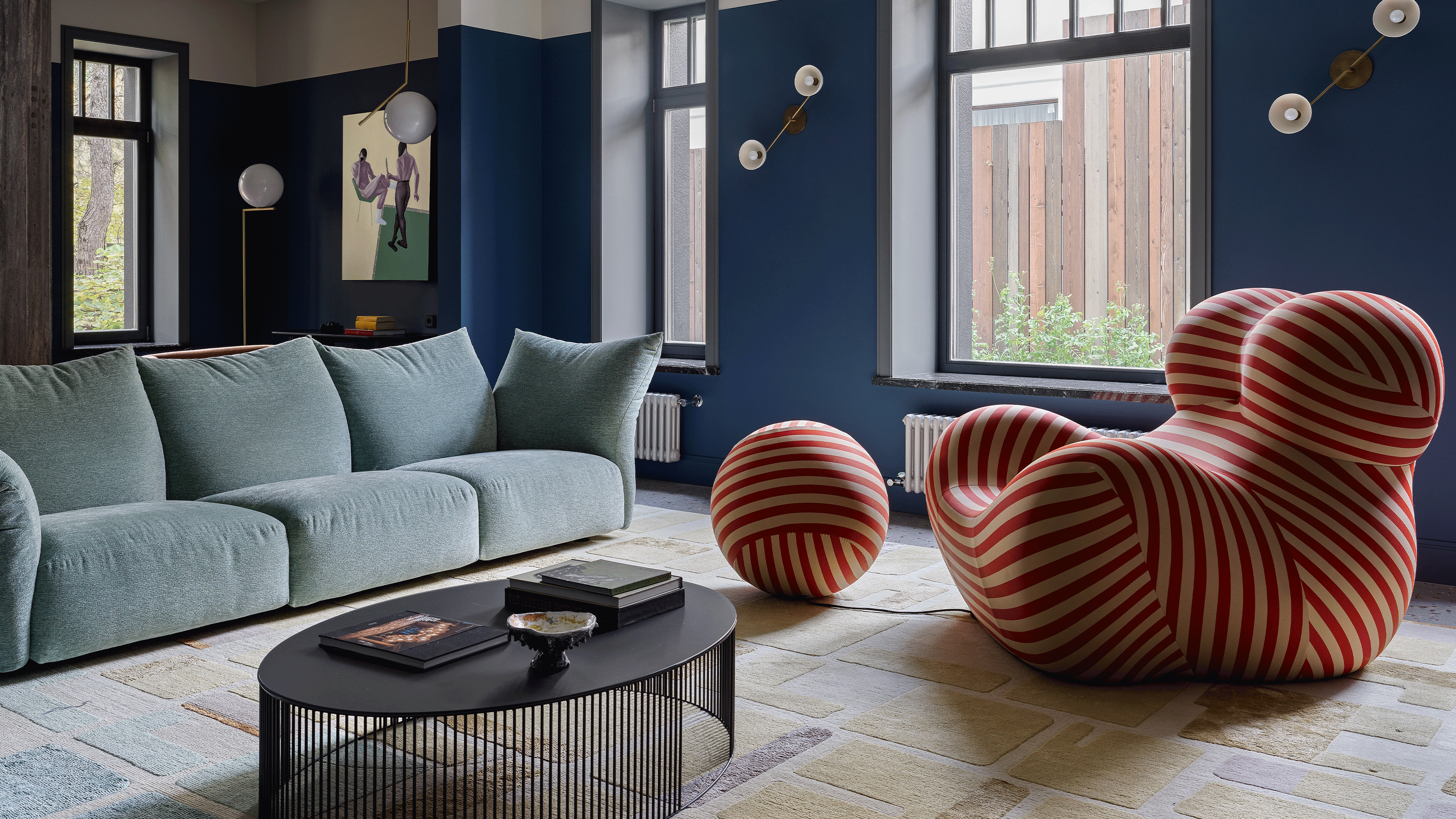

It is absolutely worthwhile investing in at least one piece of iconic furniture for your home, Anthony Barzilay Freund, the editorial director at 1stDibs, tells me. And it needn't be a slippery slope, either. The power of even one well-designed piece that has stood the test of time, is that it can elevate everything else around it.
And, yes, that often means making a considerable investment — unless you know your way around an estate sale, or are good at picking 'future classics'. But it's worth it. "Not only will iconic furniture pay for itself over time through the pride and pleasure you derive from it, it will retain — and perhaps even increase — its value in ways modern or watered-down versions never will,” Anthony adds.
So, what are the iconic furniture pieces to put on your wish list? From iconic sofas to tables, chairs, and coffee tables, below, I've shared a curated edit from 'those in the know' in the industry.

Anthony Barzilay Freund oversees 1stDibs' editorial content, including the weekly Introspective magazine; The Study blog; and the brand's annual The 1stDibs 50 awards, celebrating the best of design — all of which is to say, he has his finger on the pulse of design, both today and historically. He also acts as the brand's director of fine arts, having previously helmed Art+Auction magazine, as well as worked as the arts and culture editor at Town & Country.
1. Eileen Gray’s Adjustable Table E 1027
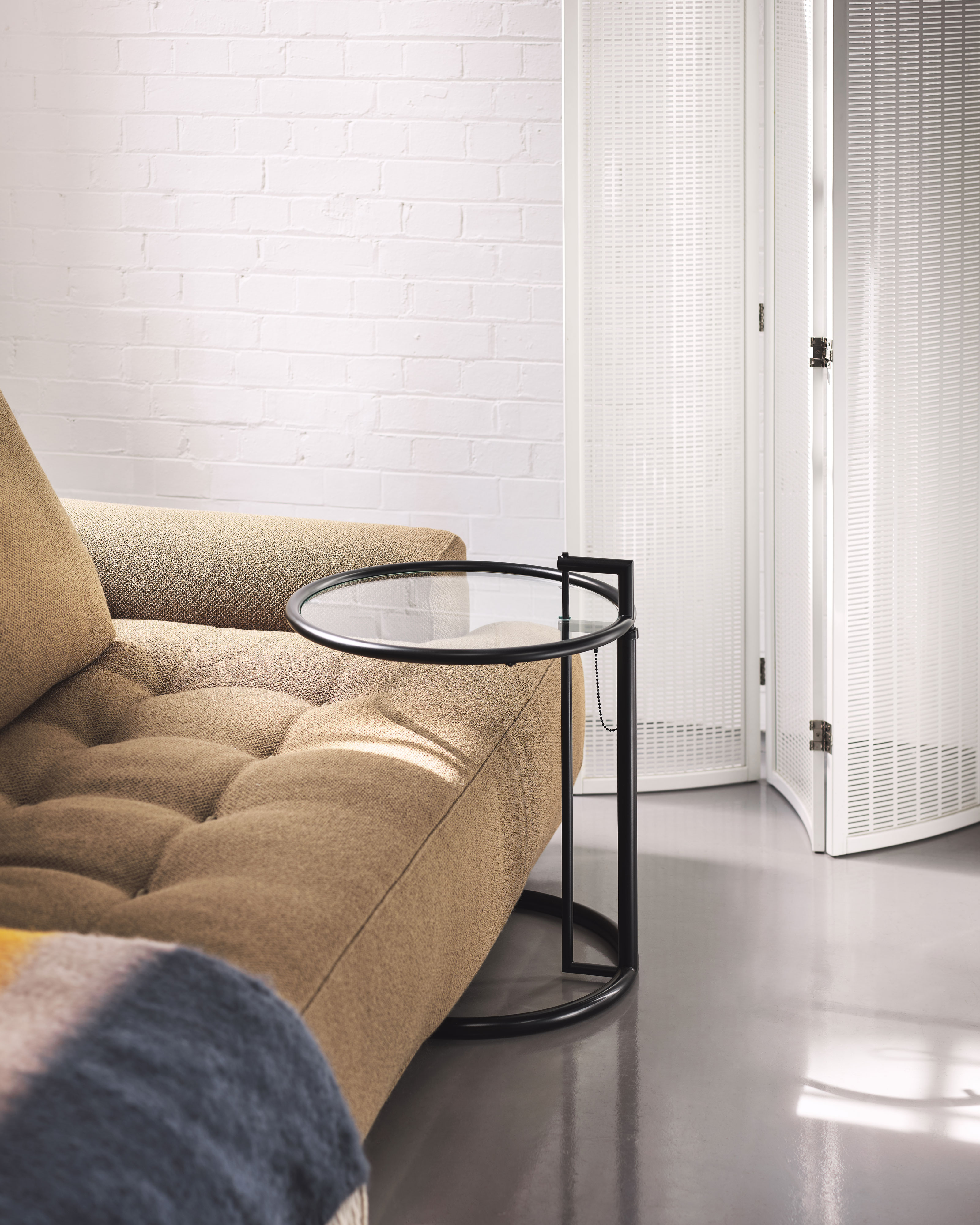
Originally designed to lean over a bed, Eileen Gray's adjustable side table, available from Aram, is a staple in any living room.
Eileen Gray wasn’t just a designer — she was a pioneer in a world that often ignored women in design. Born in Ireland in 1878, she didn’t just stick to one thing — she mastered interiors, furniture, and even architecture over her career. And while she’s often linked to other names, like Le Corbusier and Jean Badovici, Eileen Gray had her own distinct, trailblazing vision.
One of her most iconic furniture pieces, the E 1027 Adjustable Table, wasn’t just about aesthetics, it was designed with love. She created it in 1927 for her sister, who loved to enjoy breakfast in bed. With its sleek tubular steel frame and adjustable glass top, it was as functional as it was stylish.
Nearly a century later, it's become one of the most classic female-designed furniture pieces, and still looks ultra-modern — further proof that Eileen Gray was well ahead of her time. Oh, and fun fact: Le Corbusier was so obsessed with Eileen Gray’s modernist villa, E-1027, that he controversially painted murals inside without her permission.
2. Eero Saarinen's Pedestal Dining Table
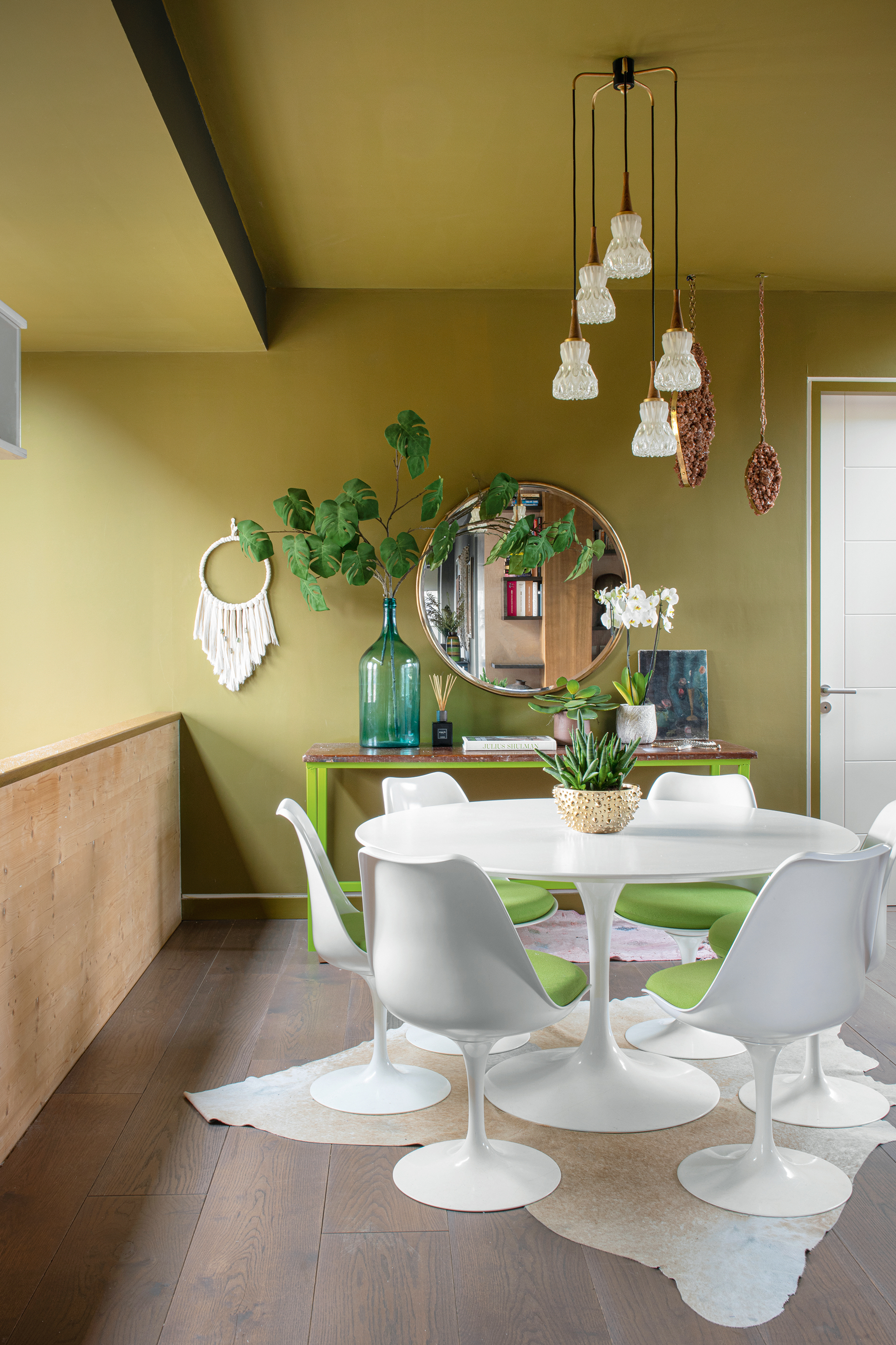
Available as both a table and chair, Eero Saaarinen's Tulip design is one of the most iconic furniture pieces.
Created by renowned Finish architect Eero Saarinen in 1958, the Pedestal Dining Table — also commonly referred to as the Tulip Dining Table — was a solution for anyone who found themselves often frustrated by the clumsiness of furniture legs. (It swaps the standard four legs for one central, sculpted support.)
The Livingetc newsletters are your inside source for what’s shaping interiors now - and what’s next. Discover trend forecasts, smart style ideas, and curated shopping inspiration that brings design to life. Subscribe today and stay ahead of the curve.
It's now infamous silhouette is believed to have been inspired by a drop of high-viscosity liquid, and is praised for its balanced design. Half a century later, this table remains a clear focal point in any dining space. Along with the Tulip Table, Eero Saarinen also crafted the Tulip Chair, that took on a similar curvilinear silhouette.
Born to an architect and a textile artist and sculptor, Eero Saarinen has many iconic projects and pieces around the world, with one of the most famous being the TWA Hotel, a stunning example of mid-century modern design. This landmark has been beautifully restored and is still open to visitors today, where you can admire his iconic furniture pieces and the glamorous travel era of the 1960s.
3. Bruno Rey’s Rey Chair
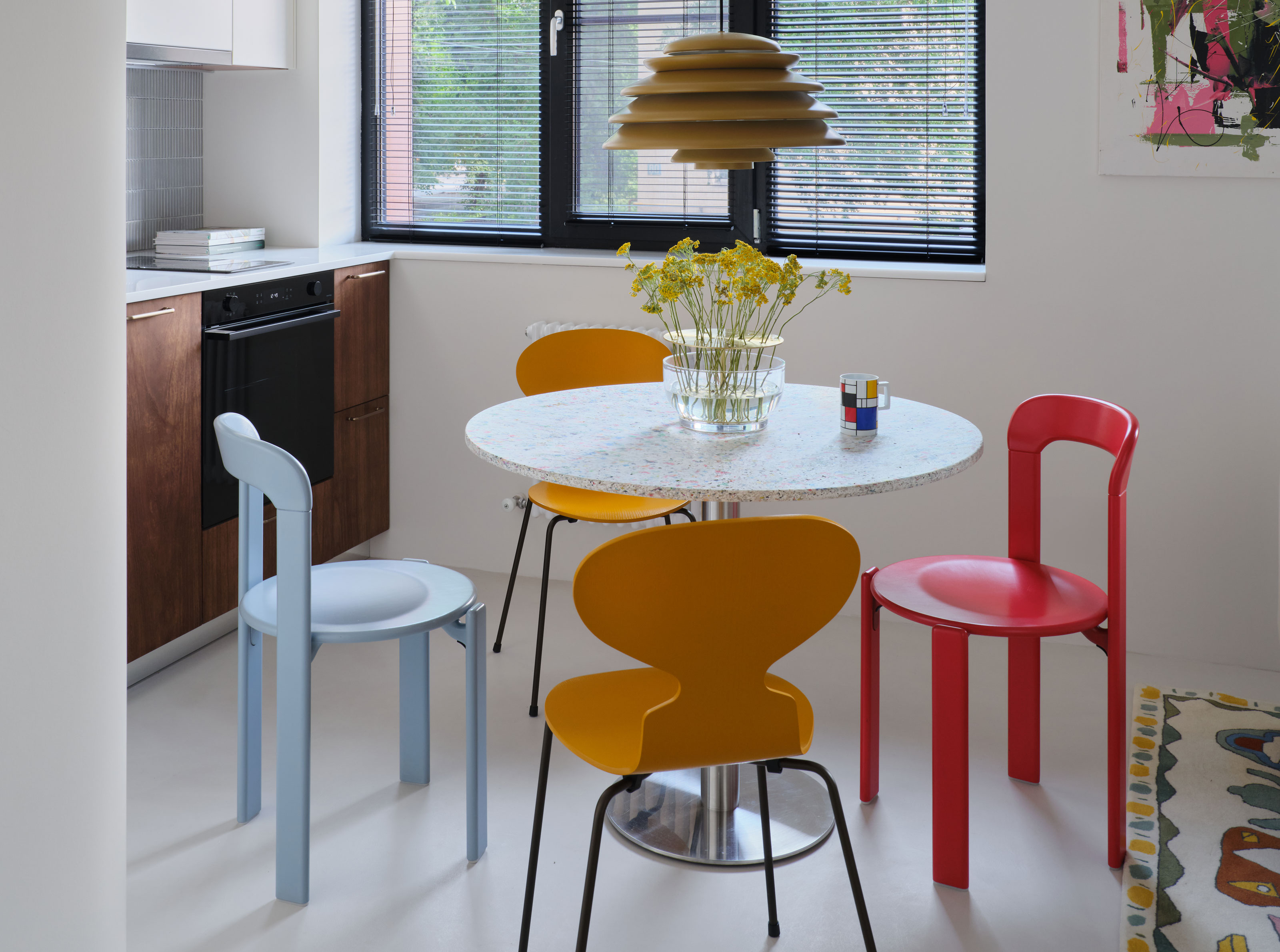
Bruno Rey's iconic Rey chair (on the left and right) are available in a range of colors.
Bruno Rey's 'Rey Chair' has seen a resurgence in popularity in the past few years, mostly thanks to its re-release by HAY back in 2022, which included a whole new palette of colors —including Slate Blue and Grape Red.
The original chairs were designed in 1971 by designer Bruno Rey. Born in Switzerland in 1933, he studied cabinetry before embarking on the world of industrial design. His work strikes a perfect balance between functionality and fun, with the now-iconic Rey Chair a prime example of this.
Simple and stackable, the curved lines and signature screw-less construction makes this chair a Swiss design classic these days. For anyone wanting to get their hands on this iconic furniture piece, this is one of the more attainable designs listed, with prices around £300 to £600, both new and used.
4. Eames’ Soft Pad Management Chair
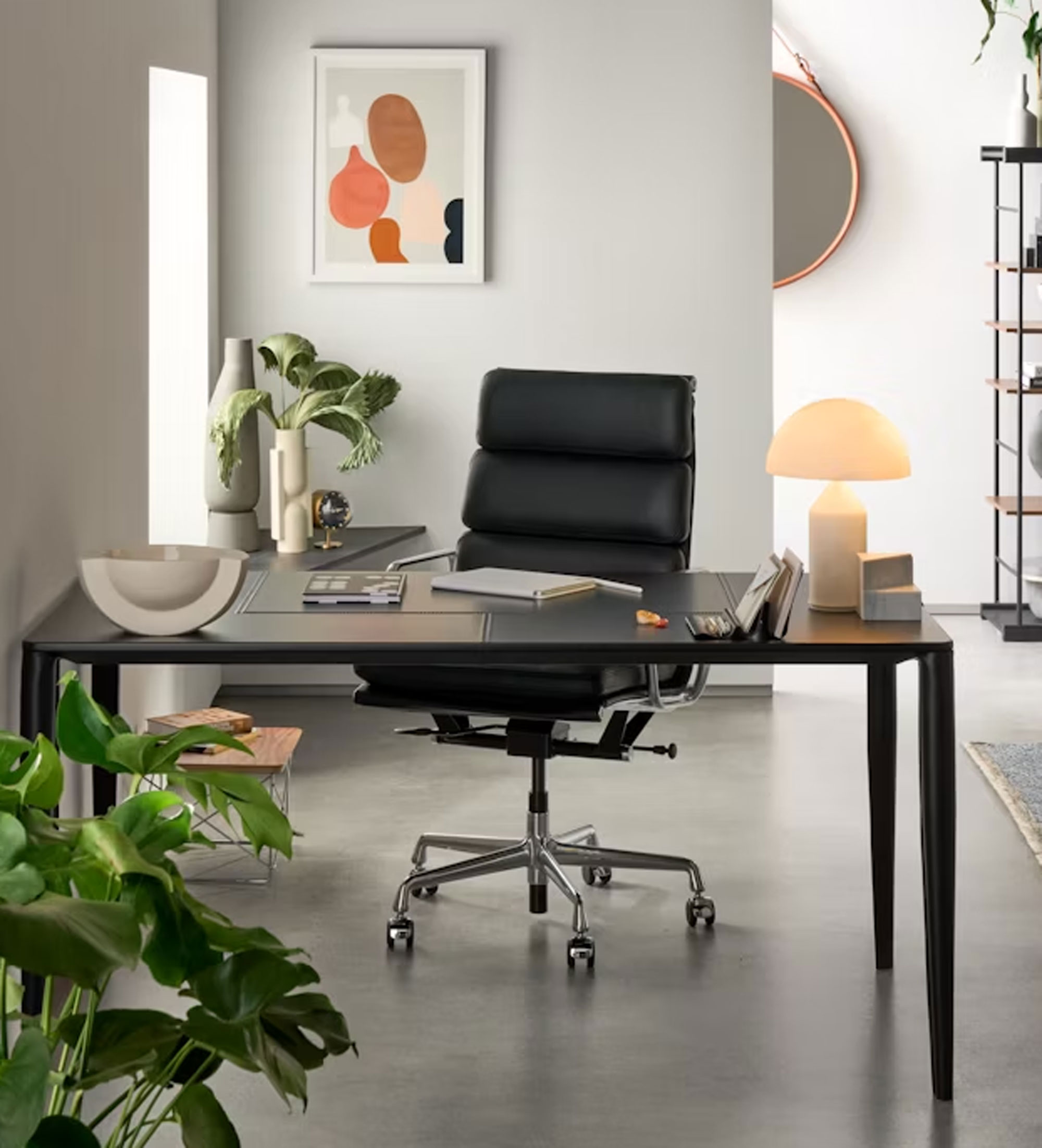
Where function truly meets form — Eames’ Soft Pad Management Chair is an icon.
Not only is this office chair super comfortable, but it was thoughtfully designed by Charles and Ray Eames back in 1969, making it an iconic furniture piece these days. The pair are one of the most prominent figures in design: Charles was an architect, and Ray was a painter and designer. They met at the Cranbrook Academy of Art, and quickly became inseparable.
You’re likely familiar with one of their most iconic furniture pieces, the Eames Lounger, but they’ve created many other works, including the Eames’ Soft Pad Management Chair.
Its ingenuity lies in its individually upholstered cushions that act as a ‘sitting pocket’ that molds to the individual’s body shape, while the hollow steel arms remain slightly warm due to low thermal capacity.
This piece has gone on to inspire many replicas, so its wise to do you research and know how to buy Eames furniture before investing.
5. Gaetano Pesce’s Up5_6 Chair
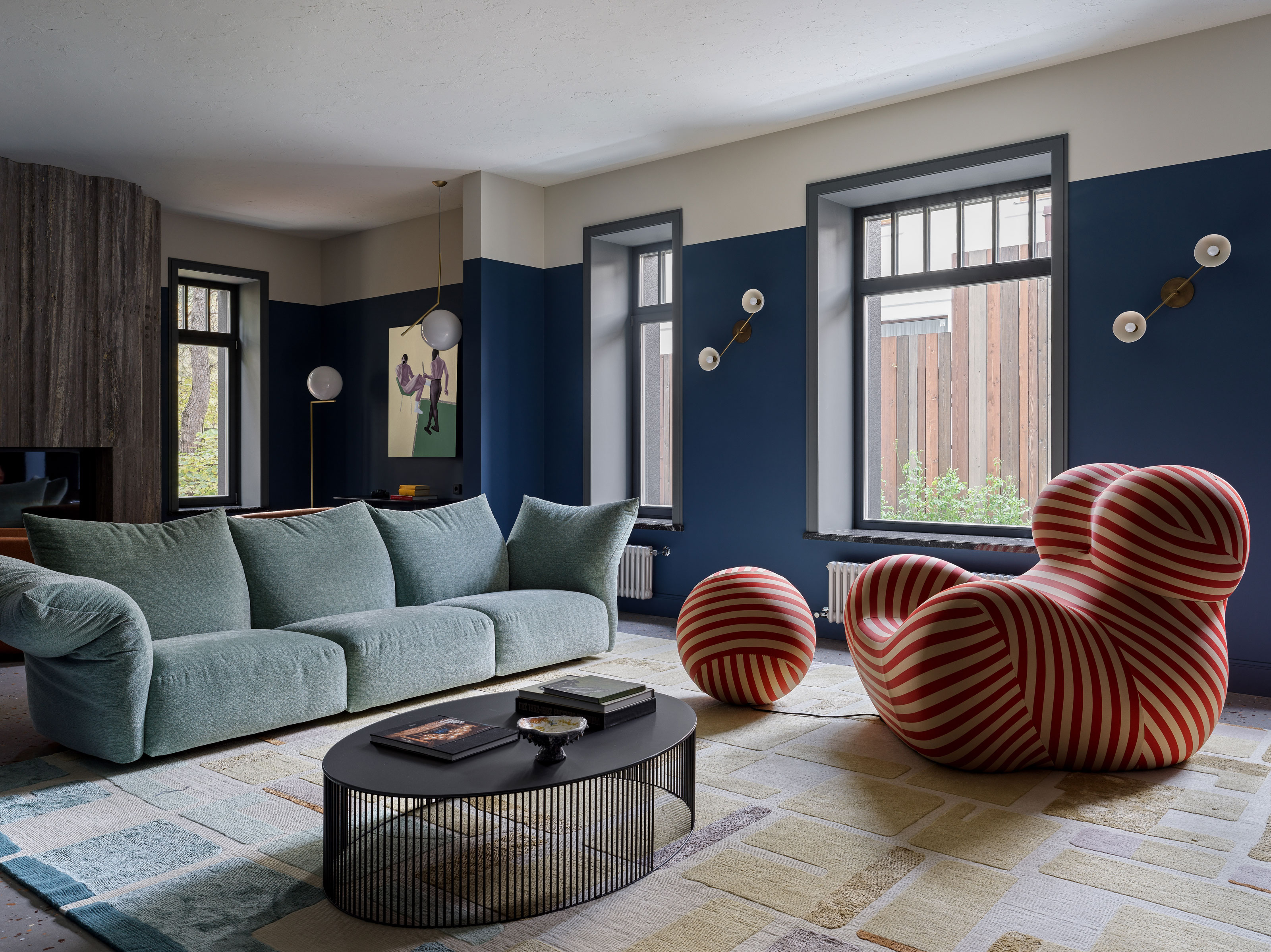
Seemingly inflated, Gaetano Pesce’s Up5_6 Chair is perhaps one of the most eye-catching pieces of furniture.
A voluptuous seat made of polyurethane, this iconic chair is a statement piece that speaks volumes with its bold design. The main seat was actually inspired by the female form, while the accompanying ottoman resembles a ball and chain.
This striking armchair was designed by Italian architect Gaetano Pesce in 1969 and goes by multiple monikers, including La Mamma, Big Mama and Dona. The designer has be quoted describing how it represents "the image of a prisoner," reflecting on how women had long suffered under the prejudice of men.
Gaetano Pesce is considered an Italian design visionary, and passed away in 2024 in New York City, his home since the 80s.
6. De Sede’s DS-600 Snake
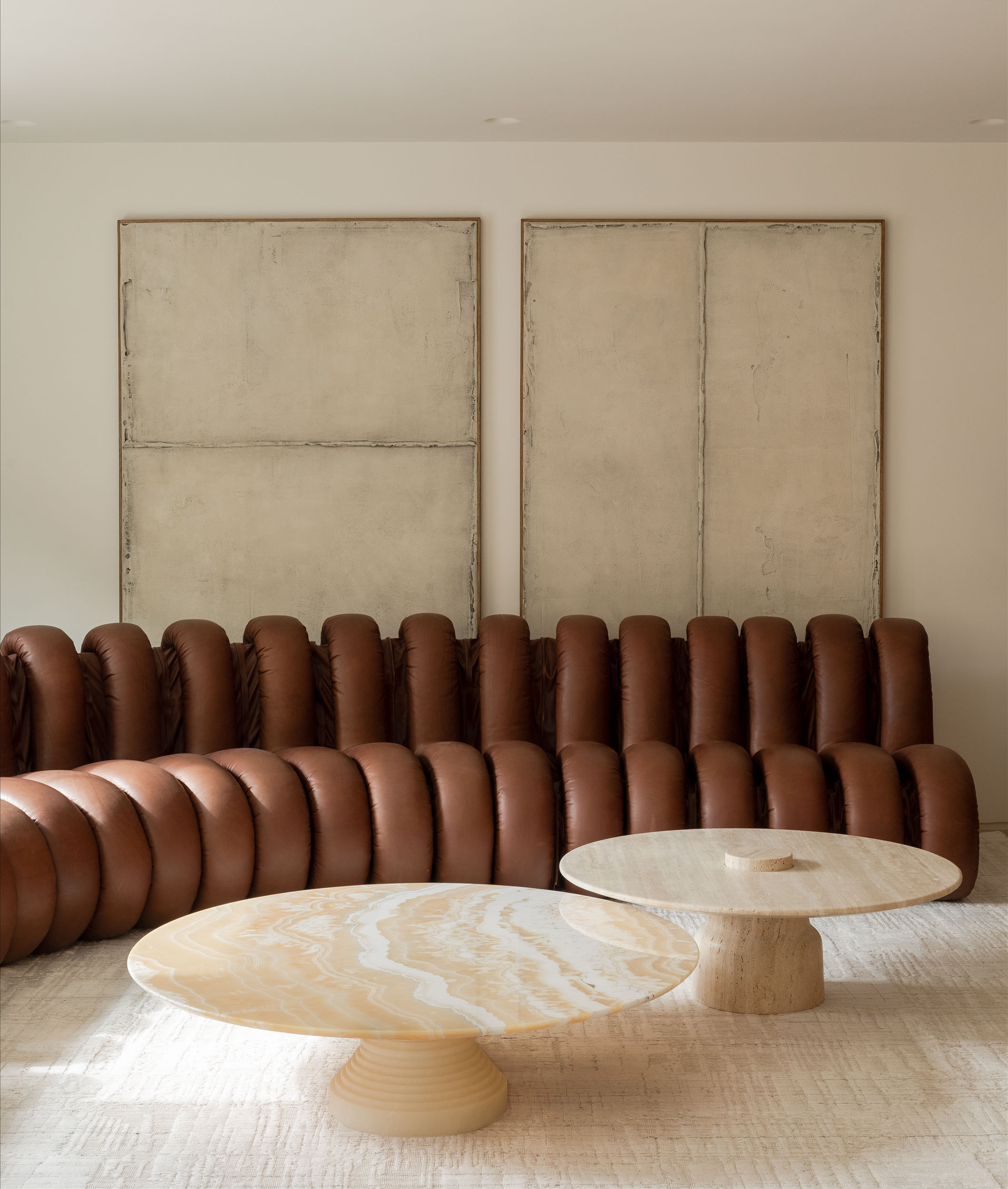
It's not hard to see the lasting allure of De Sede’s snake-like sofa.
The iconic sectional was designed by a team of designers: Ueli Berger, Eleonora Peduzzi Riva, Hans Ulrich, and Klaus Vogt for Swiss brand De Sede back in 1972. Nicknamed the ‘Snake’ due to its flexible, sinuous shape, the DS-600 is made of individual cushioned segments that zip together, allowing it to curve, twist, and adapt to any space.
A favorite among collectors, the DS-600 remains a staple in celebrity homes, interiors, and films. It has appeared in The Spy Who Loved Me, Hunger Games, Black Mirror: Bandersnatch, Scarface, Wonder Woman 1984 and many more — solidifying its status as one of the most coveted iconic furniture pieces worth investing in, in history.
In fact, 1stDibs' Anthony Barzilay Freund told me that he thinks De Sede’s DS-600 is the most iconic sofa to invest in, and proof that bold design and comfort will never go out of style.
7. Finn Juhl’s Model 45
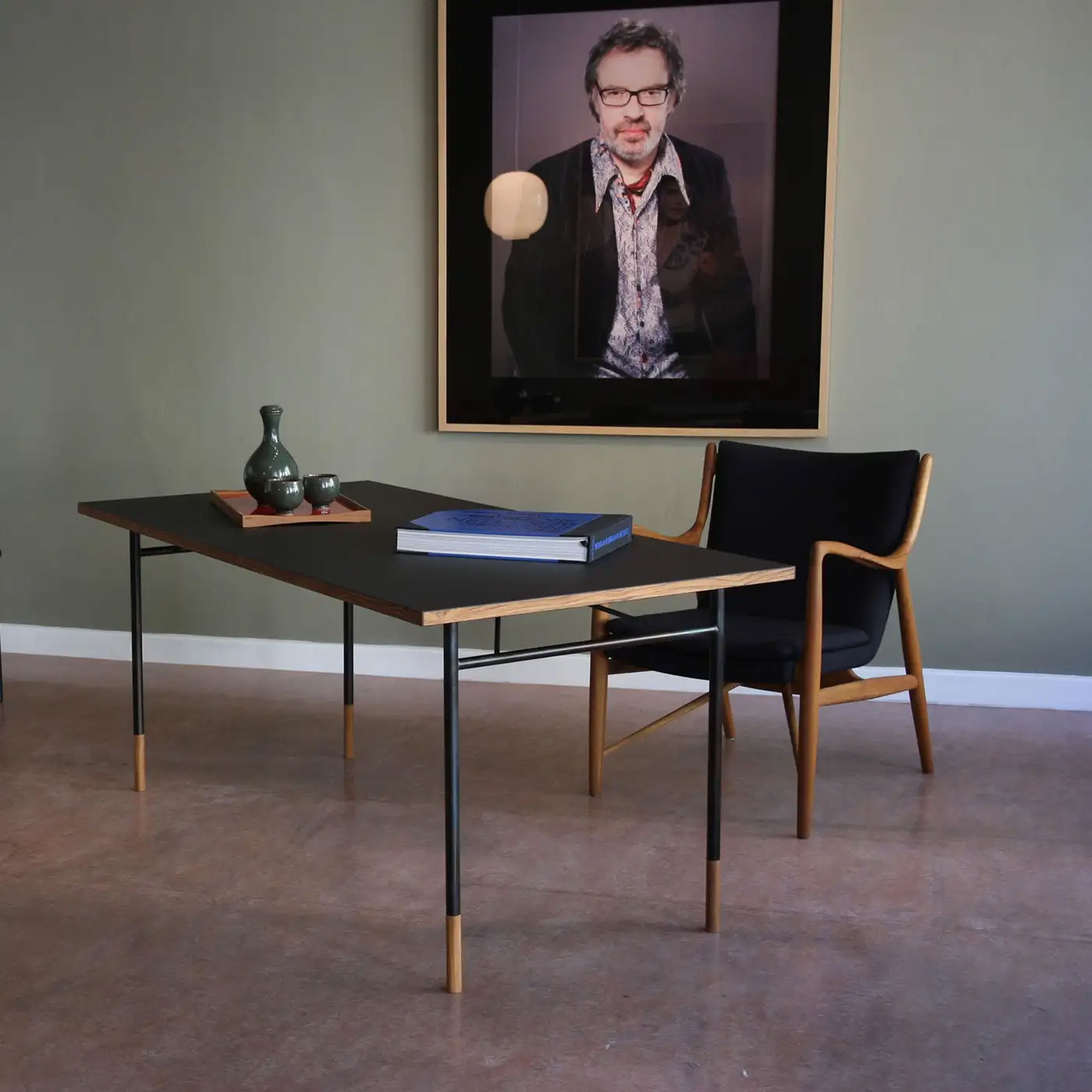
A classic design, Finn Juhl’s Model 45 chair looks like something that would still be designed today.
Designed over 80 years ago, Finn Juhl’s Model 45 chair still reads modern today. It’s sleek, refined, and the perfect example of Danish craftsmanship at its finest.
Finn Juhl, a formally trained architect with a particular penchant for modern art, introduced Danish modernism to America in the 1950s. At the time he faced criticism as functionalism was in favor with his Danish contemporaries.
He later gained popularity in America when Edgar Kaufmann Jr., the curator of industrial design at the Museum of Modern Art in New York, championed his work — including the Model 45 armchair.
The organic frame gives the chair a sense of lightness — so much so that the seat and backrest seemingly to float. An original Model 45 chair can run as high as tens of thousands of dollars, with designs currently listed on 1stDibs for over $100,000 USD.
8. Isamu Noguchi’s Noguchi Table
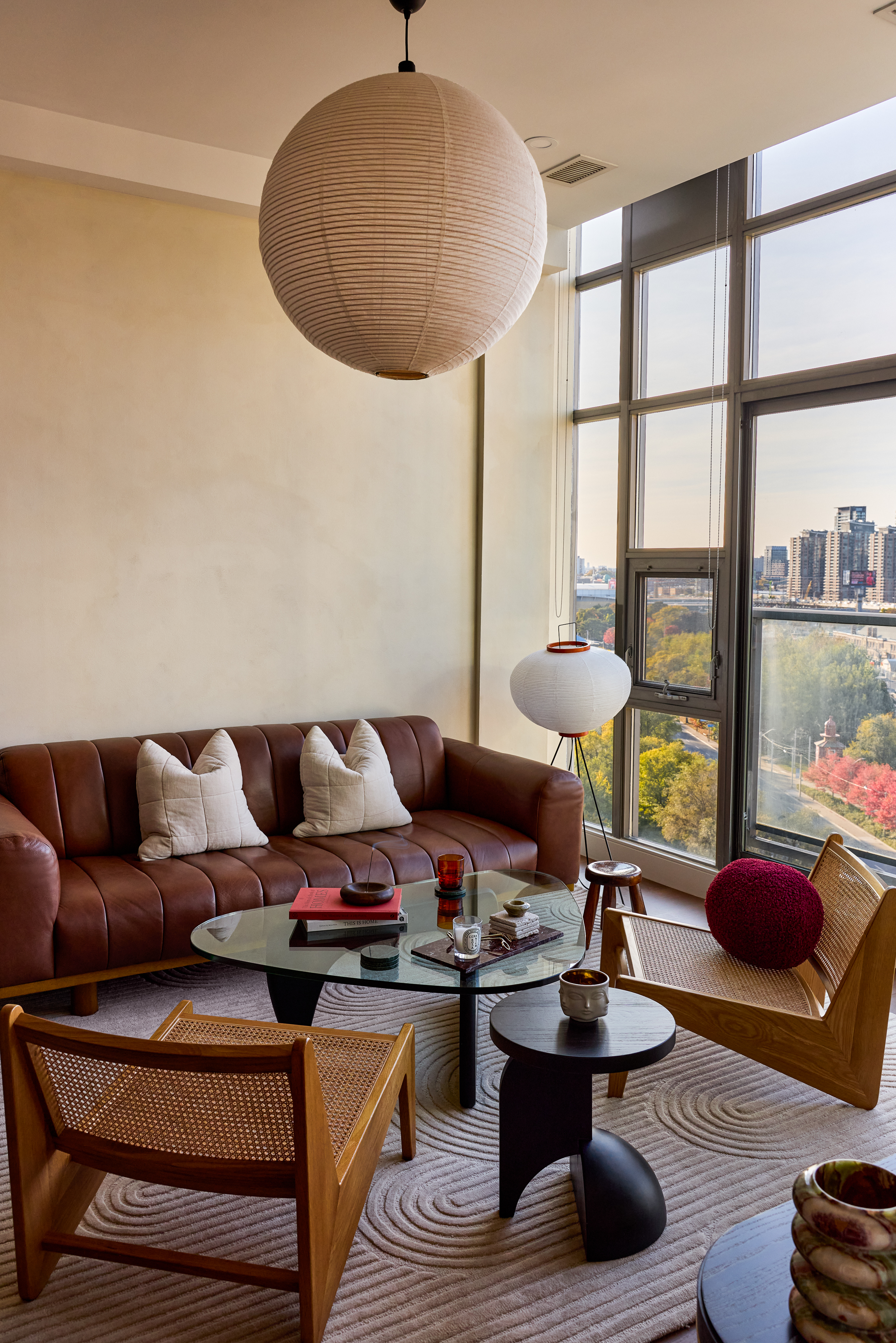
This coffee table is an iconic example of mid-century modern design.
Architect Yannis Noé Diril told me he believes the Noguchi Table is one of the smartest investments you can make in iconic furniture, citing its sculptural design and timeless elegance as two qualities that make this coffee table a statement piece, seamlessly fitting with various interiors.
Designed by visionary Isamu Noguchi, who was born in 1904 in Los Angeles to a Japanese father and American mother, the table reflects his unique East-meets-West design philosophy, which was influenced by his multicultural upbringing.
Today, a new Noguchi Table retails for just over $2,000 from the Noguchi store. If investing in this iconic furniture piece on the secondhand market, an original design has two marks worth identifying for authenticity: the edge of the glass top for Noguchi’s signature, and the Herman Miller logo on the underside of the base.
9. Fritz Haller’s USM Haller Modular System
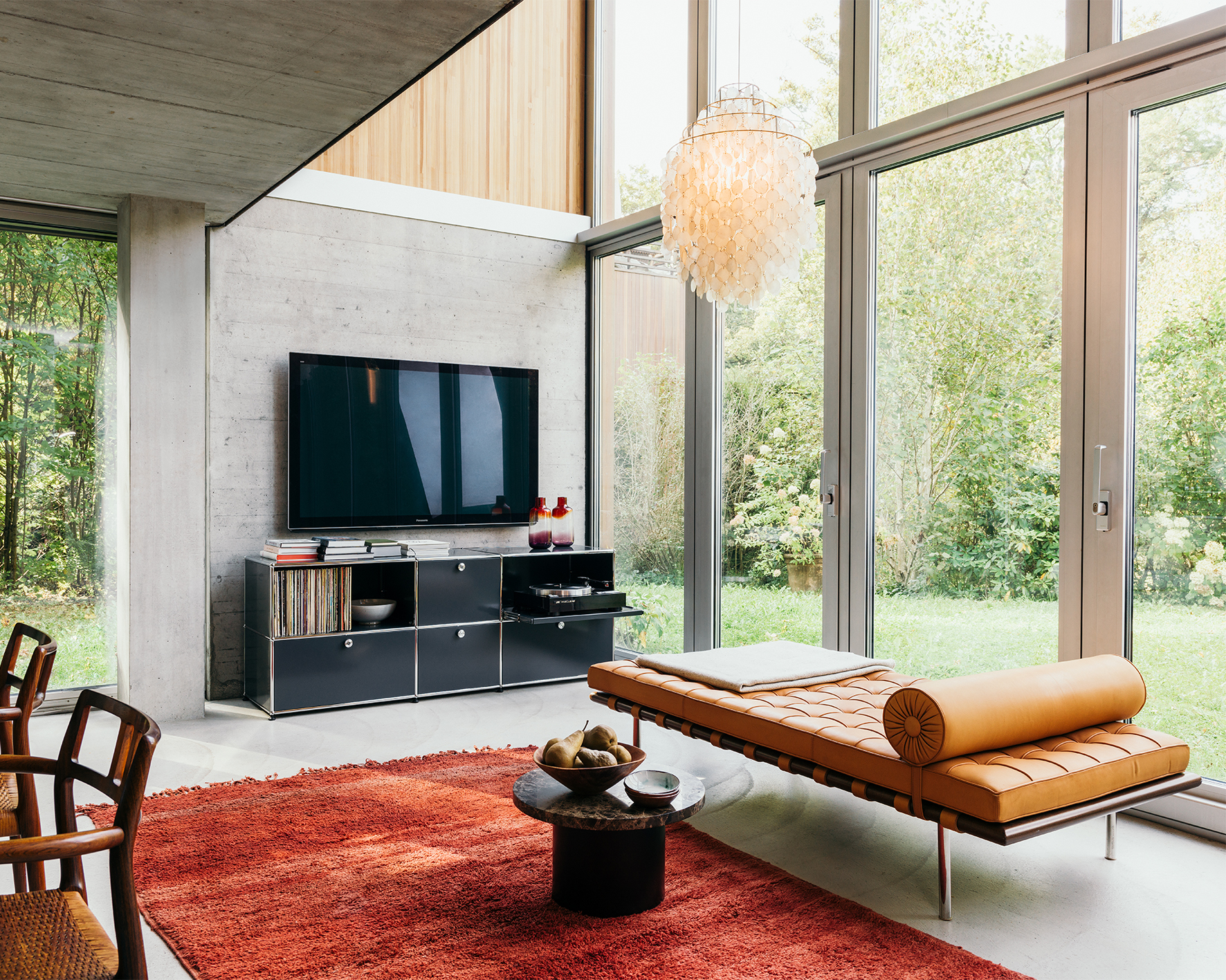
With endless combinations (and more designs arriving), when it comes to storage, you can't beat USM Haller's iconic designs.
USM Haller modular storage is instantly recognizable with its tubular steel frame, ball joints, and colorful panels which can create endless configurations. It truly is form and function at its finest when it comes to storage solutions.
Designed six decades ago in 1963 by Swiss architect Fritz Haller, this clever system was his most famous project, and revolutionized the way people think about functional, adaptable furniture. It allows you to play designer, customizing everything with right angles — shelves, desks, tables, cabinets, and more (all for a modest price tag once indoctrinated into the Swiss furniture ecosystem).
The brand even just released a new collaboration with Armando Cabral, which introduces beds and armchairs into the range.
10. Alvar Aalto’s Stool 60
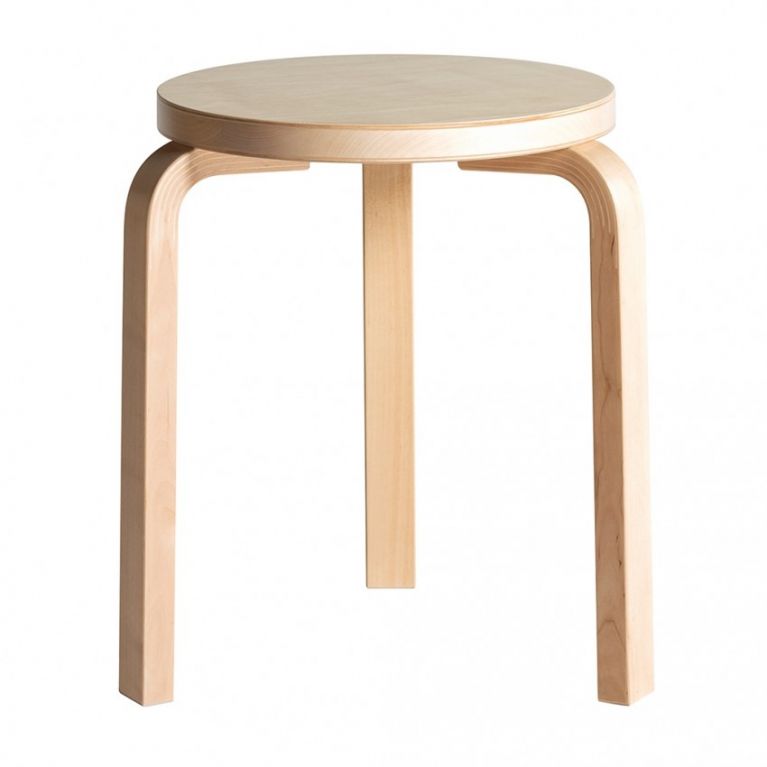
Unassuming but game-changing, Alvar Aalto’s Stool 60 deserves its rightful place on any iconic furniture list.
When people think about iconic furniture, stools don't always come straight to mind, but they're a super versatile piece, especially in small spaces, which makes them a wise investment. They can act as a seat, a table, a plant stand, a ladder, and more.
But amongst the most iconic designs, is Alvar Aalto's Stool 60, known for its ‘L leg’, which was made possible by a Birchwood steam bending technique patented by Finnish architect.
This invention not only changed how furniture was made, but also contributed to the growing movement of Scandinavian modernism, where functionality was just as important as aesthetics. Alvar Aalto was also deeply involved in industrial design, creating a range of furniture, glassware, and lighting.
The furniture pieces that reach iconic status demonstrate the very best in style, form, and innovation. And while nowadays, their price points are considerable, that wasn't necessarily always the case — there are some vintage IKEA pieces that now sell for hundreds of thousands, even though they originally retailed for around $30.

Phoebe Kut is a Canadian illustration and interior design creator who rose to prominence in 2022 when her TikTok and Instagram (@pbjdesign_) went viral. Her portfolio includes collaborations with brands including Samsung, Google, Design Within Reach, Anthropologie, Hilton, and Mugler. Most recently, her interior design work was featured in Architectural Digest.